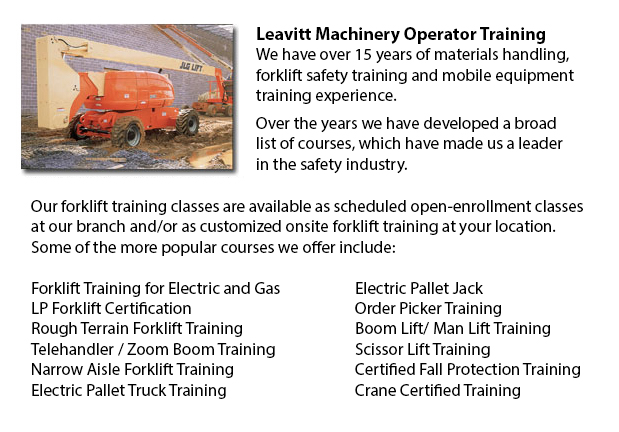
Boom Lift Operator Training Goodyear - A cherry picker refers to a type of aerial work platform. Cherry pickers include a platform or bucket at the end of a hydraulic lifting system. The device is likewise known as a boom lift, man lift, basket crane or hydraladder.
The platform or bucket is normally mounted on the back of a huge motor vehicle like for instance a truck, that is sometimes referred to as a bucket truck. A self-moving platform, stand-alone trailer or flat back pickup van could also be made use of. The worker stands and begins working in the bucket. The individual in the bucket normally has an upper set of controls allowing control of the bucket's position. The bucket's reach can be lengthened on various models by telescoping so as to adjust the lifting arm. Safety controls which are automatic prevent tipping. Articulated boom lifts are recommended for working within tight areas or when it is necessary to clear obstacles.
Cherry pickers, as the name suggests, were first constructed for picking fruit in trees at high levels. These machines are usually used in other industries like for example construction, mining and exterior painting. At times they are made use of for cleaning windows on high rise. The machines are utilized to service telephone, cable television and electrical equipment on utility poles. At times, firefighters utilize cherry pickers, referred to as snorkels, when ladders are not enough. At Christmas time, civic workers could be seen hanging banners and lights within cherry pickers.
Boom Lift Operator Safety Training
The industry recommends Safety Awareness Training meets standards set by your local regulations. Program includes safe operation procedures through a combination of classroom and hands-on components.
Sessions comprise the following topics: general equipment safety matter; current regulations and applicable concerns; fall protection; features of boom lifts, different stationary work platform and scissor lifts.
The responsibilities of the lift operator are covered, including the following topics: workplace checks; function test procedures; avoiding and knowing hazards; equipment manufacturer's instructions and pre-operation check procedures.
-
Crane / Overhead Crane / Truck Mounted Crane / Hydraulic Cranes Training in Goodyear
Bridge cranes or likewise called overhead cranes are a kind of industrial material handling crane making use of a line and hook device that runs on a horizontal beam running along two widely separated rails. Many overhead cranes can be seen inside a... More -
Fantuzzi Parts
The Italian Fantuzzi Group offers a glut of material handling equipment and heavy machinery. The equipment consists of numerous equipment specializing in transporting, loading and unloading goods. The railway freight sector and the port authority req... More -
Forklift Training School Goodyear
Forklift Training School Goodyear - Why A Forklift Training School Could Actually Help A Business And Its Employees - CSA and OSHA establish criteria for forklift safety training that meets existing regulations and standards. Anyone intending to oper... More -
Warehouse Forklift Training Classes Goodyear
Warehouse Forklift Training Classes Goodyear - The purpose of warehouse training classes are to raise the awareness of common workplace hazards. The trainees would learn necessary warehouse safety measures. An emphasis is placed on paying attention t... More -
Aerial Lift Ticket Goodyear
Aerial Lift Ticket Goodyear - A boom truck is frequently recognized by the cable and phone business vehicles that have the long arm folded over their roofs. Usually, a bucket-like apparatus sits at the extension of extendable arms. Sometimes termed a... More -
Telehandler Ticket Goodyear
Telehandler Ticket Goodyear - The telescopic handler or telehandler is a generally used equipment in agricultural and industrial applications. This machine is similar in look to a forklift and even works in a similar way, even though telehandlers are... More -
Scissor Lift Safety Training Goodyear
Scissor Lift Safety Training Goodyear - A Scissor Lift is a practical type of platform that normally moves in a vertical direction. The equipment is capable of this movement because of the use of folding supports that are linked in a criss-cross patt... More -
Aerial Boom Lift Training Goodyear
Aerial Boom Lift Training Goodyear - For individuals who operate or supervise the use of aerial lift platforms, right aerial boom lift Training is necessary. The aerial lift platform is for lifting individuals, materials and tools to elevated work lo... More

Forklift Training Goodyear
TOLL FREE: 1-888-254-6157
Goodyear, Arizona
forkliftcertificationgoodyear.com
Email Us
About Us


